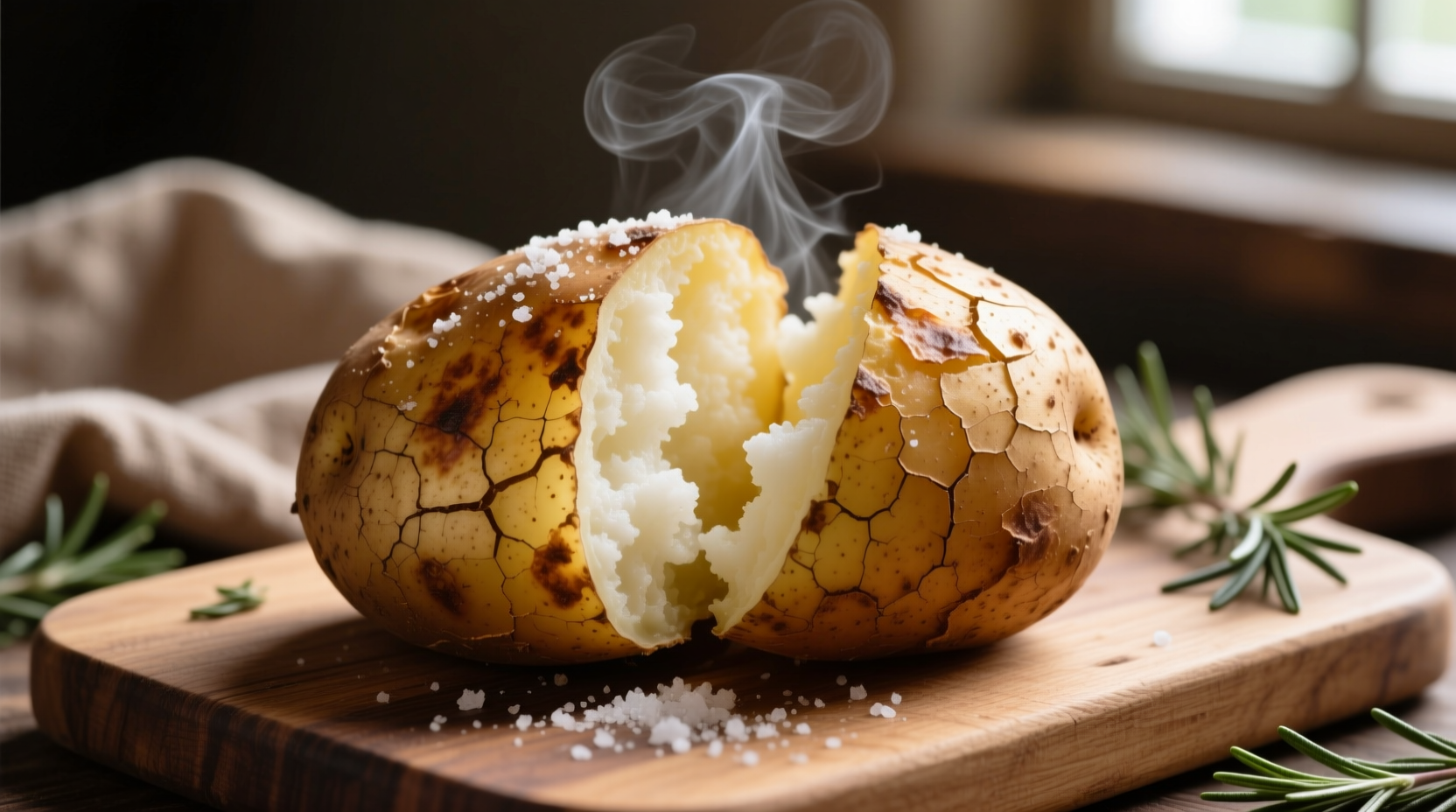Nothing beats a perfectly baked potato—crisp on the outside, fluffy on the inside, ready to be dressed with your favorite toppings. But getting that ideal texture depends entirely on proper baking time and temperature. Whether you're a beginner cook or looking to refine your technique, this guide delivers the exact timing you need based on potato size, oven type, and desired results.
The Standard Baking Method for Perfect Potatoes
For consistently excellent results, follow these straightforward steps that professional chefs use in their kitchens:
- Preheat your oven to 400°F (204°C)—this temperature creates the ideal balance between cooking the interior thoroughly while crisping the skin.
- Prepare your potatoes by scrubbing them clean and drying thoroughly (moisture prevents crispiness).
- Poke 4-6 holes with a fork to allow steam to escape during baking.
- Place directly on the oven rack (with a baking sheet on the rack below to catch drips) for even heat circulation.
- Bake for 45-60 minutes for medium potatoes (about 8 ounces/225g each).
- Test for doneness by inserting a fork or skewer—it should slide in with no resistance.
According to the USDA Food Safety and Inspection Service, potatoes reach safe eating temperature at 205-210°F (96-99°C), which is slightly higher than the standard 165°F guideline for many foods because of their dense structure. This higher temperature ensures complete starch gelatinization for that signature fluffy texture.
How Potato Size Affects Baking Time
Not all potatoes bake at the same rate. The size of your potato dramatically impacts the required cooking time. Here's a precise breakdown:
| Potato Size | Weight | Baking Time at 400°F | Internal Temperature |
|---|---|---|---|
| Small | 5-6 oz (140-170g) | 35-45 minutes | 205-210°F (96-99°C) |
| Medium | 7-9 oz (200-255g) | 45-60 minutes | 205-210°F (96-99°C) |
| Large | 10-12 oz (280-340g) | 60-75 minutes | 205-210°F (96-99°C) |
| Jumbo | 13+ oz (370g+) | 75-90 minutes | 205-210°F (96-99°C) |
When baking multiple potatoes of varying sizes, arrange them by size on the oven rack and check the smaller ones first. This approach prevents smaller potatoes from overcooking while larger ones finish. For the most accurate results, use an instant-read thermometer to verify internal temperature rather than relying solely on time.

Adjusting for Different Oven Types
Your oven type significantly impacts baking time. Convection ovens with their circulating hot air cook food approximately 25% faster than conventional ovens. When using a convection oven:
- Reduce temperature by 25°F (about 15°C)
- Check potatoes 10-15 minutes earlier than conventional oven times
- Rotate the baking sheet halfway through cooking for even browning
For those baking at high altitudes (above 3,000 feet/900 meters), increase baking time by 5-10 minutes. The lower atmospheric pressure affects how moisture evaporates from the potato, requiring slightly longer cooking to achieve the same internal temperature.
Pro Tips for Restaurant-Quality Results
Professional chefs use these techniques to elevate their baked potatoes from good to exceptional:
- Never wrap in foil—this steams the potato rather than baking it, resulting in soggy skin. For crispy skin, bake directly on the rack.
- Rub with oil and salt before baking for extra-crispy skin (use about 1 tsp oil and ¼ tsp salt per potato).
- Let potatoes rest for 5-10 minutes after baking—this allows the interior to finish setting and makes them easier to slice open.
- Choose the right variety—Russet potatoes have the ideal starch content for fluffy interiors, while Yukon Golds offer a creamier texture.
Troubleshooting Common Baking Issues
Even with precise timing, problems can occur. Here's how to fix the most common issues:
- Undercooked center: Return to oven for 10-15 minute increments until fully tender. This often happens with larger potatoes or if oven temperature runs low.
- Overcooked/mushy texture: Reduce baking time by 5-10 minutes next time. This typically occurs when potatoes continue cooking after removal from oven.
- Burnt skin: Lower oven temperature by 25°F and increase baking time slightly. Darker ovens absorb more heat, requiring temperature adjustments.
- Uneven cooking: Rotate potatoes halfway through baking and ensure proper air circulation around each potato.
Storing and Reheating Leftover Baked Potatoes
Proper storage maintains quality for future meals:
- Cool completely before refrigerating (within 2 hours of baking)
- Store in airtight container for up to 5 days
- Reheat in oven at 350°F for 15-20 minutes for best texture (microwaving makes skin rubbery)
- For crispy skin revival, finish reheating under the broiler for 2-3 minutes
When reheating, check that internal temperature reaches 165°F (74°C) for food safety. The University of Minnesota Extension confirms that properly stored baked potatoes maintain quality for several days when handled correctly. Their food safety guidelines recommend against storing baked potatoes in foil at room temperature due to potential botulism risk.
Perfect Timing for Special Occasions
When baking potatoes for holiday meals or dinner parties, timing becomes critical. For a stress-free experience:
- Bake potatoes 1-2 hours before serving and hold in a warming drawer
- For large gatherings, bake potatoes at 325°F for 90-120 minutes—this lower temperature prevents overcooking while accommodating multiple trays
- Prepare toppings in advance so potatoes can be served immediately after baking
Remember that potatoes continue cooking slightly after removal from the oven—a phenomenon known as carryover cooking. For perfectly timed meals, remove potatoes from the oven 5 minutes before they reach ideal doneness.











 浙公网安备
33010002000092号
浙公网安备
33010002000092号 浙B2-20120091-4
浙B2-20120091-4